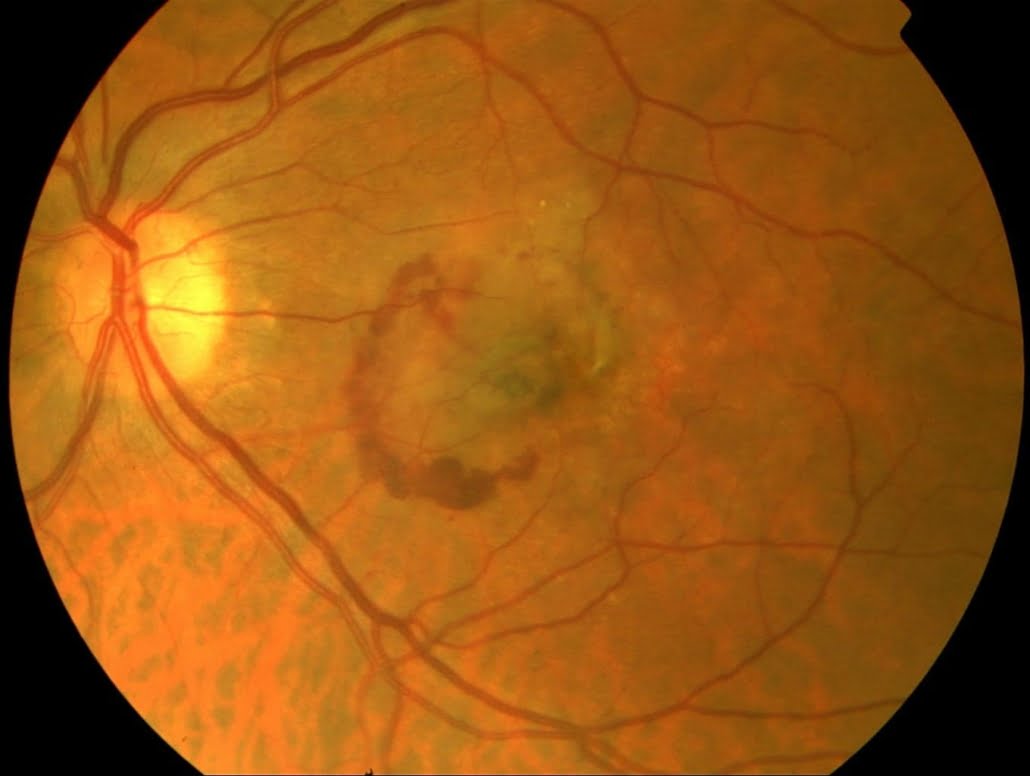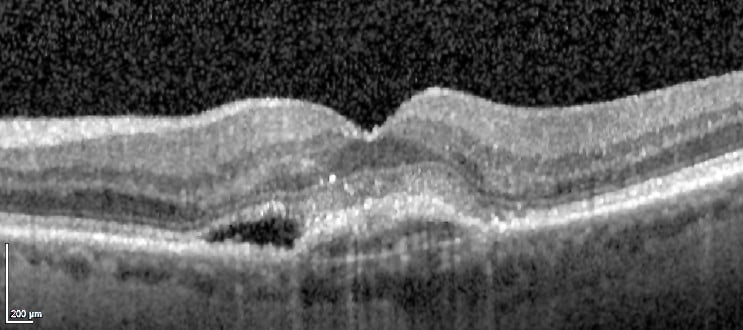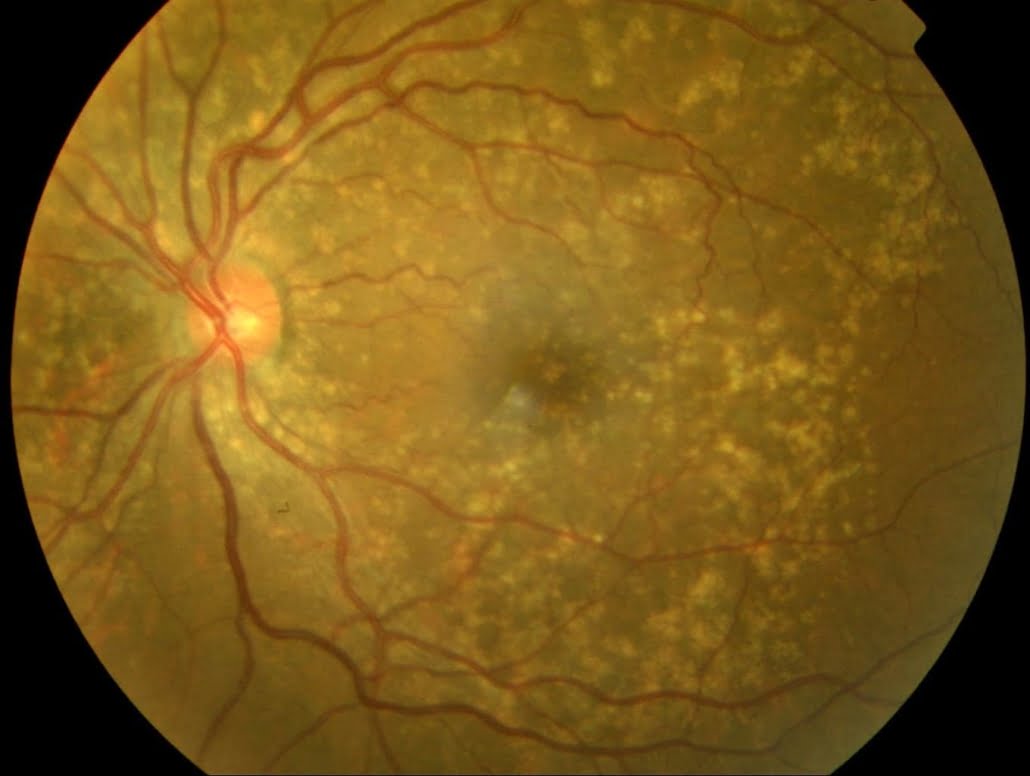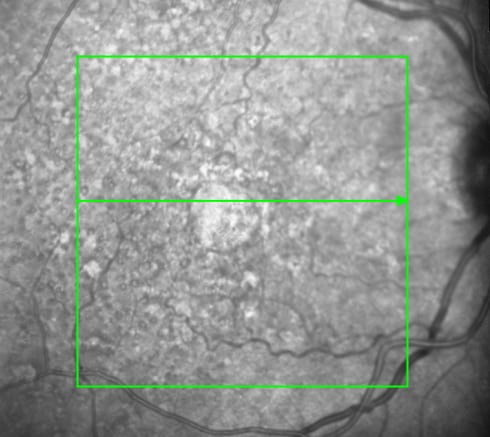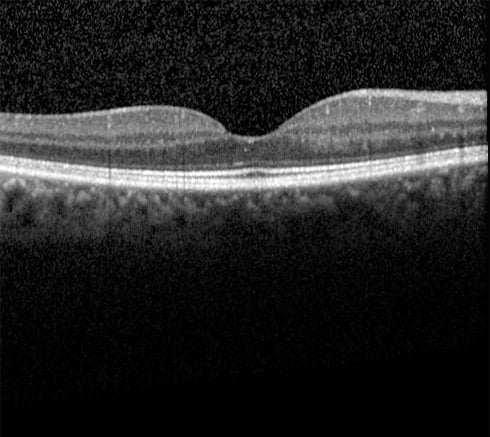Age-related macular degeneration (AMD) is a common condition in people over 50. It affects the macula, the area inside the back of the eye that normally provides clear central vision. It is commonly divided into two types: wet AMD and dry AMD.
Wet AMD
Wet AMD occurs when new blood vessels grow and then leak fluid and blood into the macula. This can cause damage and scarring to the macula.
Photograph of the macula showing a darkish central area surrounded by fresh blood due to wet AMD.
This OCT scan shows a cross section of the macula in wet AMD. There is a collection of fluid in the deep layers of the central macula, unlike in a normal OCT scan.
Normal OCT.
Dry AMD
Dry AMD occurs when the substance of the macula degenerates (atrophies). It typically starts with the development of yellow deposits under the retina (drusen). Dry AMD usually progresses very slowly and can cause gradual deterioration of vision.
This photo shows multiple yellow-white deposits (drusen) scattered across the retina.
Infrared image showing a pale central island of geographic atrophy.
OCT image showing a cross-section of thinned retina in the area of geographic atrophy.
Normal OCT.
What are the symptoms of AMD?
Mild AMD may have no symptoms at all. Usually the first symptoms people notice are:
- finding it harder to see detail
- finding it harder to read small print even with your reading glasses
- straight lines looking wavy or distorted
- a slight smudge or blurred area in the centre of your vision
AMD can lead to significant and severe loss of central vision. However, most people do not lose all their sight as peripheral vision is maintained.
How is wet AMD treated?
The main treatment for wet AMD currently is injections of drugs (known as anti-VEGFs) into your eye. These injections usually need to be given at regular intervals eg. every 1-2 months, and treatment often needs to continue indefinitely.
How is Dry AMD treated?
There are no current standard treatments for dry AMD. However, vision aids and advice can help you to maximise your available vision.
More detailed information about AMD and its treatment can be found in our patient information leaflet.
